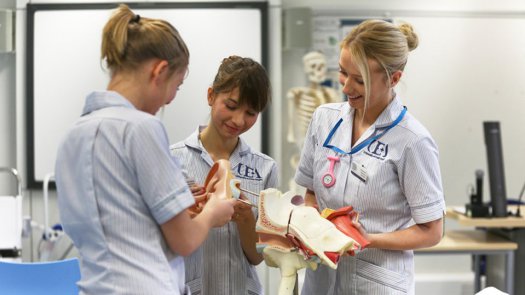Currently, I’ve been busy with placement on a general Critical Care Unit comprising of an ICU and an HDU. I feel so grateful for having amazing mentors and working with super friendly staff.
 courtesy of UEA, link: https://twitter.com/uniofeastanglia/status/877806558507225089
courtesy of UEA, link: https://twitter.com/uniofeastanglia/status/877806558507225089
Firstly, ICU (Intensive Care Unit) involves one-to-one nursing care, as opposed to one nurse and 12 patients on a ward. Critically ill patients come from all walks of life: car accidents, heart attacks, massive strokes, acute respiratory distress syndrome (ARDS), chest infections with respiratory failure, sepsis, self-harm (overdose cases, hangings, and other suicide attempts), complicated surgeries, catastrophic spinal injuries, kidney failure needing renal replacement therapy (RRT), multiple-organ dysfunction and others. Patients on ICU are often sedated, ventilated (on a breathing machine) and closely monitored. The most difficult part is breaking bad news to families and seeing how upset they can become if their loved one deteriorates. Mortality rates remain high with around 30 to 45% of patients who die within the ICU. Hope lies within research which aims to discover better ways of treating patients by keeping infections at bay, continually improving staff’s skills and knowledge, advancing treatment options, and testing new drugs. Although, prolonging life through invasive treatment may sound like a good idea at first, we are often faced with moral and ethical dilemmas when quality of life deteriorates and is unlikely to ever recover. Making difficult choices, such as withdrawing treatment can be quite stressful and emotional.
Secondly, HDU (High Dependency Unit) involves the care of one nurse for two patients who are still very unwell but less dependant than ICU patients. These types of patients are either a step-down from ICU or admitted for respiratory support (non-invasive ventilation, or delivering high flow oxygen using Optiflow), patients following high-risk orthopaedic surgeries (scoliosis correction, hip/knee revisions), vascular cases (abdominal aortic aneurysm repairs, thrombosis, balloon stents, and pulmonary embolisms), head and neck surgeries, abdominal surgeries and others. Deteriorating patients from wards can also be escalated to critical care and be admitted to either HDU or ICU for further support and monitoring.
Overall, my critical care placement has been going really well and my clinical skills have improved tremendously. I feel very excited about starting my job on ICU later this year and feel motivated about advancing my skills and knowledge.
Advertisements Share this:




